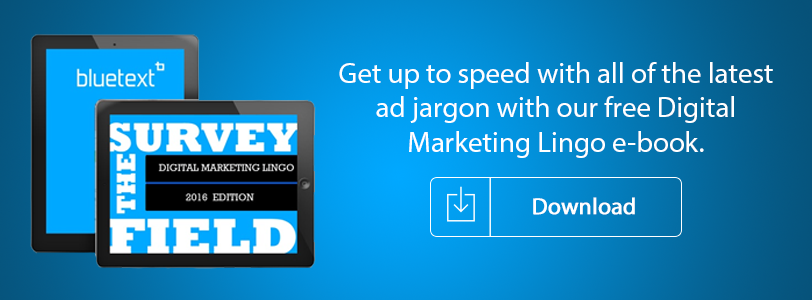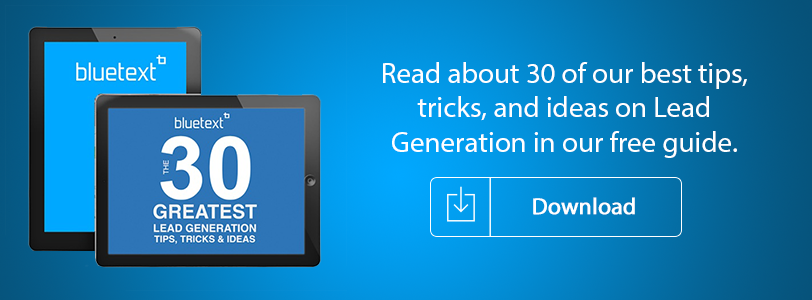Last week I was fortunate enough to be invited by BizBash to speak at their DC event entitled “ELEVATE”.
Elevate is a one-day conference where event and meeting professionals are able to rethink and explore the new attendee journey at events. Featuring in-depth workshops on event marketing, technology, design, sponsorships, and other topics, they discovered innovative ideas and compelling insights from the most influential names in events.
As BizBash.com describes it, “Social media has become a key component in all aspects of business, especially live experiences. Understanding new, emerging platforms and how social media and event marketing strategies merge is an integral part of the event marketing process. In this session, Jason Siegel, founding partner of Bluetext, will discuss how to develop a three-part campaign style approach to social media to maximize event reach. Siegel will share new ways to create urgency to register, how to leverage website personalization, insights on interpreting engagement, and how to seamlessly integrate virtual reality to drive interest and registrations for events.”.
The energy and buzz in the Reagan Center was very strong, and it was great to get out and meet a lot of top marketers in the field of event marketing, virtual reality, and all kinds of experiential elements. Please enjoy the presentation I gave below.
When people ask me about Bluetext, I often find myself calling us of the region’s top B2B marketing firms. We work with world class global enterprises. We are on the cutting edge of branding trends and focused on leveraging emerging marketing channels. And we have a world class team of people focused on delivering great results for our clients. So here is my take on what makes us one of the top B2B marketing firms:
- A top B2B marketing firm works across a wide variety of industries. In my view, focusing on just a few industries can be limiting and lead to tired tactics. Instead, taking the learnings from some industries and applying them into adjacent markets can be valuable to clients.
- A top B2B marketing firm can tackle a wide variety of marketing assignments, delivering integrated solutions for clients. Clients like integrated service offerings. They like to work with clients who create a strategy then are able to roll it out via many channels.
- A top B2B marketing firm is working at the forefront of emerging delivery channels. See our recent work for Varonis at bluetext.com/varonis
- A top B2B marketing firm gives guidance versus simply taking orders. Challenging assumptions, doing things differently, and looking at ideas through different lenses can be incredibly valuable.
- A top B2B marketing firm starts with goals versus focusing on channels. Understanding where a client wants to go before deciding how to get there can be quite valuable.
- A top B2B marketing firm should have a seat at the table with you during key strategic meetings.
- A top B2B marketing firm should push your internal team to think beyond traditional channels and programs to reach prospects in new and unique ways.
- A top B2B marketing firm is part of the community and recognized for its great work
- A top B2B marketing firm is able to adjust strategies mid-course.
- A top B2B marketing has a client roster that you immediately recognize.
So that is my list. That is how I define a top B2B marketing firm. What did I miss? Please share other ideas and I can update the post in the future. And for more insights on B2B marketing, reach out to Bluetext today:
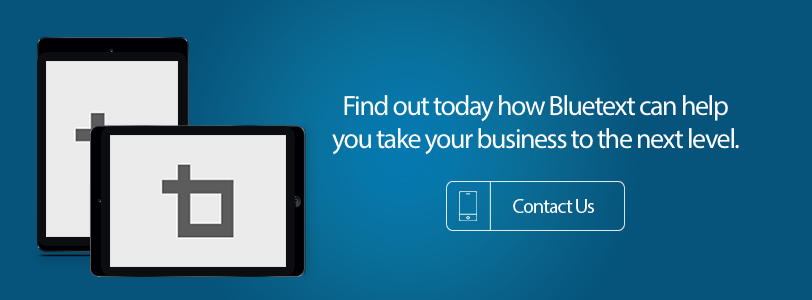
Before Twitter, LinkedIn, search engine optimization, and mobile apps there existed an individual within many enterprises that has gone all but extinct today: The public relations director. When my own PR career started on the agency side two decades ago, our in-house client contact would often include one or more professionals exclusively focused on public relations. Yes, some corporate communications positions have endured, but over time organizations saw less value in PR specialists, and more interest in hiring multi-disciplined marketing leaders and staff for which yes, public relations was one function of the broader purview. As a result, in-house PR titles have dissolved faster than the polar ice caps as it was expected that marketing professionals would come with built-in public relations skills.
A similar scenario is being debated with digital marketing leaders, as some enterprises question whether a separate position is required, or if the CMO should be expected to lead digital marketing efforts. The conversation bubbled up in an AdWeek article last week, which chronicled the departure of Umang Shah as director of global digital marketing and innovation at Campbell Soup Company. The move was announced as the company’s CMO, Greg Shewchuk, assumed digital marketing strategy responsibilities.
Addressing the move, Campbell’s spokesperson Megan Haney told AdWeek that, “Digital marketing is a core competency of all our marketers. Umang’s role was a global position that will be not be filled. What we’re doing is recruiting a team of digital experts with specialist skills to be part of our U.S. marketing team.”
Haney’s response reflects that fact that many organizations expect CMOs to arrive hard-wired for digital, and while global corporations like Campbell Soup may have a dedicated digital team, it will operate under the stewardship of the CMO.
All of this said, the shift is far from universal. The AdWeek article goes on to cite a number of marketing experts who acknowledge that while digital is an integral part of marketing, familiarity with digital channels does not by default equate to an understanding on how to best use these channels and data for maximum impact.
Organizations seeking the right balance of internal and external digital marketing strategy and execution resources should take a handful of factors into consideration:
- Have you made significant digital marketing investments that aren’t paying off?
If you have hired digital specialists and invested in digital activities but are not seeing the expected ROI, this may be an indication that the digital initiatives lack proper strategy and innovation. There can be many reasons for this, ranging from the lack of a digital director to marketing leaders that are stretched so thin that there is no way they can devote the proper time to creating and tracking digital efforts on a day-to-day basis.
- What are the core competencies of your CMO?
CMOs bring a diverse range of skill sets, and increasingly data analytics is a competency business leaders seek to analyze the efficacy of digital marketing programs. Alternatively, some CMOs with strong data chops may not have as much experience developing innovative digital marketing campaigns that encompass video, web, social, virtual reality, etc. For organizational leaders, it’s about putting together a puzzle of personnel and capabilities that can deliver the full digital and traditional marketing strategy and execution stack that leaves no gaps.
- Can and should the CMO run the digital marketing stack?
It’s not just people and process that CMOs and digital marketing directors must run, its tools as well – digital marketing technology tools that have multiplied exponentially just in the last five years. Marketing leaders could spend a good part of their day evaluating these tools and trying to figure out the right combination for their organization based on need, budget and impact.
Marketing Land columnist Jim Yu reiterates the challenge CMOs face to navigate a web of tools that often focus too little on performance-led technology that drive a healthy ROI. Yu speaks of building digital marketing stacks that can plug gaps in the “digital performance gap,” and it is worth questioning whether all of this can and should fall to a CMO versus a dedicated digital strategist.
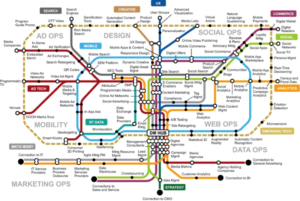
- How much kool aid has the marketing team been drinking?
Your marketing team may know digital, and it may know your company, but does it have a firm grasp on how competitors are marketing to target audiences? And is it up to speed on digital marketing innovation that can help the organization rise above the noise in selling products and services? While digital marketing agencies may not know your organization as well as internal staff, they can offer a gut check perspective beyond what may be possible with an internal team that is “too close” to be objective.
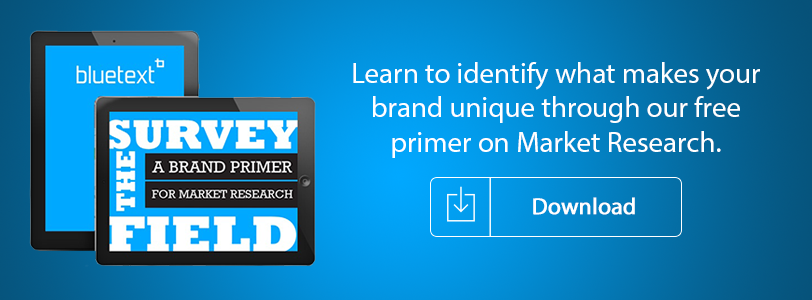
To answer the title of this blog post let’s first start by reviewing the difference between a Digital Marketing Company and a Marketing Company. How much can really be different in today’s digital driven economy? A lot. Many traditional marketing companies claim to offer a full suite of digital services, when, in fact, they do not.
This isn’t a big secret. Traditional marketing companies’ pitches can seem like smoke and mirrors, hiding the fact that they are not capable of providing true digital marketing services such as search engine optimization (SEO), social marketing, and robust user experience design, website redesign and development– and let’s not forget the ever more critical content and UX strategy now necessary for any brand to truly succeed online.

Marketing Companies often maximize their technical capabilities with a help desk junior associate, while digital marketing companies have a chief technology officer and talent that surrounds him to offer top notch digital services to its clients. Marketing companies often feel because their latest version of Photoshop enables them to make a website design comp they are of course now a top website design agency. Not really true as web design in today’s responsive design world requires services such as journey mapping, taxonomy development, and persona research that informs a sophisticated website presentation to its users that really delivers.
While both top digital marketing companies and top marketing companies offer a sophisticated integrated way to drive targeted traffic to its users, the reality is that the digital firm will offer up ideas that use the latest and greatest digital trends because they have talent focused on emerging platforms and how to integrate them together. From virtual reality to data visualizations, this kind of lingo is second nature at a digital marketing company, but at a traditional top marketing company the answer is either the firm is feeling awkward and not confident offering this solution, or the talent helping is a 3rd party consultant that isn’t truly integrated into the agency’s DNA.
So now that I have helped clarify the difference between a Top Digital Marketing Company and a Top Marketing Company, let’s look at that other word – Company vs Agency.
An agency’s job is to plan a campaign using digital and traditional methods such as PR, broadcast media, online advertising, or direct marketing. They utilize the talents of their art directors, graphic designers, and copywriters. They create campaigns that shine the spotlight on your product or service for a finite length of time.
If you have a global strategy, a well-defined brand, a keen idea of exactly who your customer is, and a designated advertising & creative budget, then you might want to utilize the services of a top agency.
Be doubly sure that you know the characteristics, the lifestyle, and current buying preferences of your customers. You don’t want to waste time and money marketing to the wrong person. Knowing your target audience and your ideal buyer is the job of marketing. Also, knowing how to attract customers versus playing tag with them is the job of marketing.
So in summary – agencies focus on campaigns to solve a client’s very specific pain point. Usually defined by the client. Agencies are usually laser focused, agile, and deliver with passion.

Mosaic illustration for the advertising campaign of Clear Channel in Switzerland
Ok, so then what’s is different about a company vs an “agency.”
You may need help in honestly assessing the needs of your business. If that is the case, here are some good questions to start out with:
1) Are you attracting enough leads?
2) Are you able to accurately track results of your advertising and marketing strategy?
3) Are you converting leads to sales?
4) Are you nurturing and maintaining relationships with your customer base?
These are the types of issues that a company can help you with. The agency prides itself, rightfully so, on taking a high level approach with a laser focus on execution. However, the top marketing company takes a more consultative approach. The result is a marketing strategy that is consistent with your company history, values, and short and long term goals. Finally, the biggest result is getting results that match your expectations.

Attention all you marketers out there…ever sat in a meeting not wanting to raise your hand to ask someone for clarification on what they mean? Concerned that your colleagues or manager will think less of you? Gearing up for your next marketing campaign and need to include some new thinking?
Let’s face it – you are not alone. No one wants to be that person who raises their hand in those situations.
The world of digital marketing is moving very fast with new terms and concepts emerging everyday. From SERP to lead scoring to SEO to responsive design, it is getting harder to keep up.
If you are p
Anyone familiar with The New Yorker Magazine may have noticed an interesting cover on the May 16 edition—a two-color drawing of a women stepping onto a subway car. It seems somewhat simple—not particularly eye-catching. But download an app called Uncovr (developed for The New Yorker), hold it over the magazine’s cover, and the image comes to life in your smart phone’s screen. Buildings grow off the page in 3-D form, music plays, city blocks rise up into the air, cars move around the streets. You can bring it in closer to zoom in among the buildings and see more detail, or bring it farther away for an overhead view. As long as you keep the screen anchored to the cover, an eye-popping video experience unfolds for the viewer.

This is Augmented Reality at its best. This older cousin of Virtual Reality has paved the way for the more immersive VR technology experiences through a Google Cardboard or a more expensive set of VR goggles like Oculus Rift or the Samsung Gear.
Augmented Reality is a live view of the physical environment that is augmented by computer-generated visuals. Virtual Reality, by contrast, replaces the real world with a digitally created one. Yet for marketers, they can go hand-in-hand. We’re huge fans of VR for digital marketing, and have produced a number of high-end experiences that bring customers into a virtual demonstration using state-of-the-art cameras and video editing. But new and better ways of leveraging Augmented Reality can play well along side of a VR campaign.
For marketers, this can mean an engaging way to preview a Virtual Reality campaign that can scale to as large of an audience as needed. Where VR videos require a set of goggles, Augmented Reality only needs a still graphic to key off of and an easy app download.

In The New Yorker’s example, the distribution model was simply the cover of the weekly publication. For CMOs at our enterprise clients, it can be a mailed postcard or one-pager, or it can be conveyed through a digital graphic via social media or an email. The image essentially serves as its own bar-code or QR code, bringing the experience to life. But rather than an obscure set of black bars and white spaces, the newer versions of Augmented Reality can anchor to a graphic representation that is part of the visual display, and leverages the motion-detecting software in the phone for changing viewing angles or for zooming in and out.
Augmented and Virtual Reality together deliver an amazing immersive experience that sets a marketing campaign far apart from the other noise in the market.
The marketing and communications business is at a bewildering junction, with two simultaneous models vying for brains and assets. Most marketing campaigns look at personas of their buyers and determine what is the best path to the promise land.
Bottom-up marketing is a concept with no single definition, but a few distinct components that set it apart from traditional top-down marketing strategies. Unlike traditional marketing, where executives create a marketing plan and a strategy to promote a company’s products and services, bottom-up marketing is mainly driven by the employees of a company. Employees recognize one specific customer need the company can meet and create a marketing strategy around that single idea.
A great example is Dropbox. Dropbox rose to $10 Billion valuation through its connection with the end user. Dropbox focused on providing the masses of end users (both personal and professional) a block of cloud storage that elegantly and brilliantly stayed synchronized on your local hard drive and your collaborative peers hard drives. Dropbox didn’t sell the CFO on cost benefits and the CTO on the power of the cloud. Dropbox simply delivered a great service with a viral approach to a roll out that created an ever growing desire for more and more storage in the cloud. In the end so many businesses had hundreds and thousands of BYOS (bring your own storage) and they needed to take control of this corporate intellectual property, and reached out to Dropbox for the suite of tools and administration to make managing the cloud instances so much more manageable, secure, and scale-able.
The top-down marketing plan contains four principal sections: situation analysis, marketing objectives, marketing strategy, and tactics. A company’s marketing objectives should be logical deductions from an analysis of its current situation, its prediction of future trends, and its understanding of corporate objectives. In the end, a top down marketing approach focuses on the top executive personas most often. The constituent who controls the purse strings. All SaaS and Enterprise technology companies are always looking for the high and mighty inside an enterprise that has the power to sign on the dotted line. Top down marketing focuses its message and offers so they should relate to the needs of specific target markets and specify sales objectives. Marketing-target objectives should be specific, quantitative, and realistic. The messaging of a top down approach often caters to the fears and dreams of that influential executive.
A great example of top-down marketing is the hyper growth industry of cyber-security. Every executive fears waking up to their employer’s brand on the headlines of major media outlets next to the word breach or hacked. Years and years of customer loyalty and brand preference can be washed away overnight. Cyber security companies are preying on these executives with a top down marketing approach that strikes fear into their hearts and minds and forces them to strike the check and implement countless solutions to help them sleep easy at night as they try to appease key constituencies including public markets.
Does your business ever wonder how to harness its precious marketing and communications budget to achieve its short and long term goals? Contact Bluetext. We are a top marketing agency that delivers results whether your campaign is focused top down or bottom up. Let us use our proprietary methodologies to define the right method, and then develop the campaigns, platforms, and content assets to knock the cover off the ball.

Time to Write My Blog…I Wrote My Blog…Time to Write My Blog
Remember the iconic Dunkin Donuts campaign from the early 80s featuring Fred the Baker?
What a classic campaign. 30 years later the lessons we can learn from Fred are relevant and applicable to modern content market.
It is hard….It is time consuming…but it can really pay off when done right. In my estimation a disciplined approach to blogging and content marketing can be a relatively low cost way of tilting the playing field for your products or services.
We have built one of the strongest content marketing practices in D.C. by working with our clients to create aggressive, consistent content marketing campaigns that ensure they have a strong presence across the web with their key audiences. We create quarterly editorial calendars that align with key company and product milestones, as well as industry events where we can help amplify messages. We instill content marketing into the DNA of our clients so that they can experience the benefits of a disciplined approach.
Content marketing, however, is not something you can just set and forget. It takes care and nurturing. It takes discipline and an entire team effort. And it takes some creativity.
So the next time someone says they don’t have time to write a blog or are too busy, tell them to give me a call. We can share war stories and I can show them significant results. I think it will make them think twice and find that extra 30 minutes each week.
In today’s mobile dominant world, app indexing is signaling the beginning of a seismic shift in the direction of search, and marketers need to pay attention.
Google has been offering app indexing for over a year and its algorithm for mobile apps has grown in complexity in lockstep with the potential impact they can have on your company’s search rankings. While the advent of mobile optimized, responsive websites has worked wonders for appealing to a now mobile dominant crowd – brands can no longer afford to ignore the online visibility advantages of a dedicated app.
Not only can mobile apps do everything that websites can – they can also deliver a more intuitive, convenient and accessible user experience – so much so that if Google has its way – apps are destined to replace websites at the speed and voracity that desktop was overtaken by mobile browsing.
According to Google, “App Indexing allows us to index apps just like websites. Deep links to your mobile app appear in Google search results, letting users get to your native mobile experience quickly and easily, landing exactly on the right content within your app.”
From a practical perspective, this means that when you perform a Google search on a mobile device, the search results will include not just web pages, but also relevant content that is within an app – even if the app is not installed on your mobile device – further assisting users in the discovery of new apps.
Google’s expansion of in-app search increases the amount of content that is being indexed – improving the search experience for mobile users – and at the same time driving higher engagement with apps.
The clear takeaway here is that brands need to grow their mobile presence to stay relevant – period. Marketers need to leverage mobile to gain traction among users and work with digital agencies like Bluetext who are already tuned into the full conversion optimization potential that mobile delivers.
This is the beginning of a mobile dynasty – and marketers need to optimize it in every way possible.
We have all been there. The requirements start stacking from all areas of the enterprise and the politics are thick. Companies are ignoring some white lies they are preaching and it is impacting a major driver that can impact your business….THE LOAD TIME OF YOUR RESPONSIVE OR MOBILE-OPTIMIZED WEBSITE.
WHITE LIE 1: “Just throw that 3rd party code snippet in the header”
Technical Saying: Minimize HTTP requests
What this means:
The quickest way to improve site mobile speed is to simplify your design.
- Streamline the number of elements on your page.
- Use CSS instead of images whenever possible.
- Combine multiple style sheets into one.
And more. Contact us if you would like an SEO assessment.
WHITE LIE 2: “Servers are all the same, it’s the cloud, ya know….right?
Technical Saying: Reduce server response time
What this means:
Your target is a server response time of less than 200ms (milliseconds). Bluetext recommends using a web application monitoring solution and checking for bottlenecks in performance. Contact us if you would like help measuring this.
WHITE LIE 3: “You don’t need compression with these fat pipes we have now”
Technical Saying: Enable compression and Optimize Images
What this means:
Large pages (which is what you could have if you’re creating high-quality content) are often 100kb and up. As a result, they’re bulky and slow to download. The best way to speed their load time is to zip them via a technique called compression. Compression reduces the bandwidth of your pages, thereby reducing HTTP response. You do this with a tool called Gzip. Oversized images take longer to load, so it’s important that you keep your images as small as possible.
WHITE LIE 4: Just throw a redirect on that problem…
Technical issue: Reduce redirects
What this means:
Redirects create additional HTTP requests and increase load time, so you want to keep them to a minimum. Considering redirecting your digital business to another agency? Contact Bluetext
WHITE LIE 5: “As we co-develop just throw the JavaScript up top”
Technical issue: Anchor pages with JavaScript vs Leading with JS
You want to place all your JavaScript at the BOTTOM of the page. This will optimize the perceived latency because as the page is loaded it stops upon encountering JavaScript. Putting scripts at the bottom allows the user interface to display before the JavaScript is loaded.
